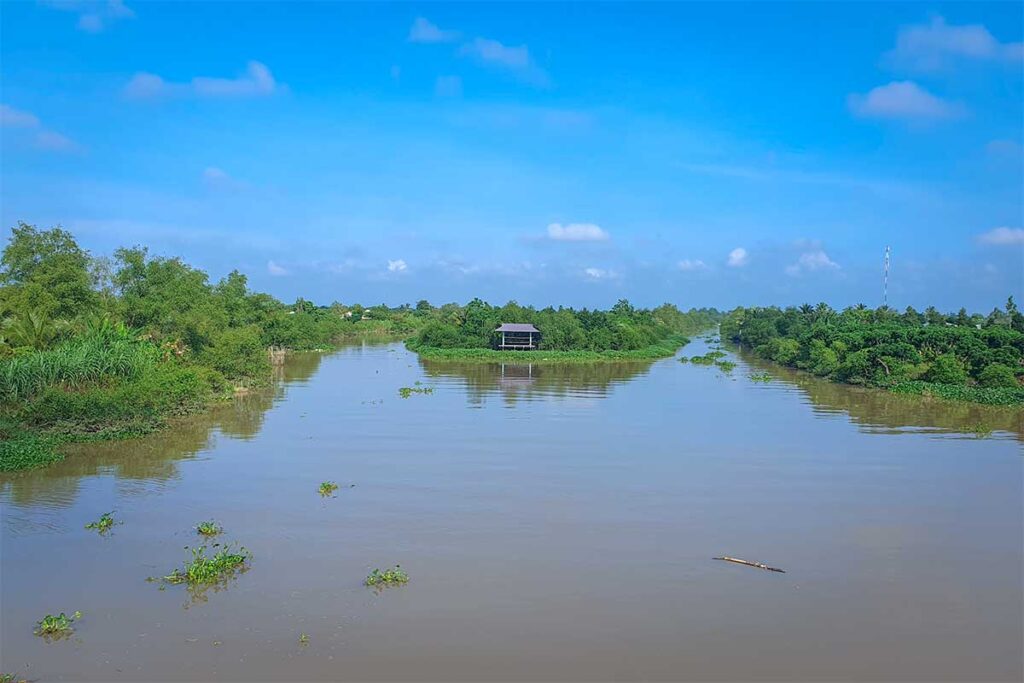What is An Binh Island like?
An Binh Island gives you a snapshot of rural life in the Mekong Delta. The landscape is shaped by orchards, rice paddies, and canals, with small ferries connecting villages and families still relying on agriculture and fishing. It feels more like everyday countryside than a tourist hotspot.
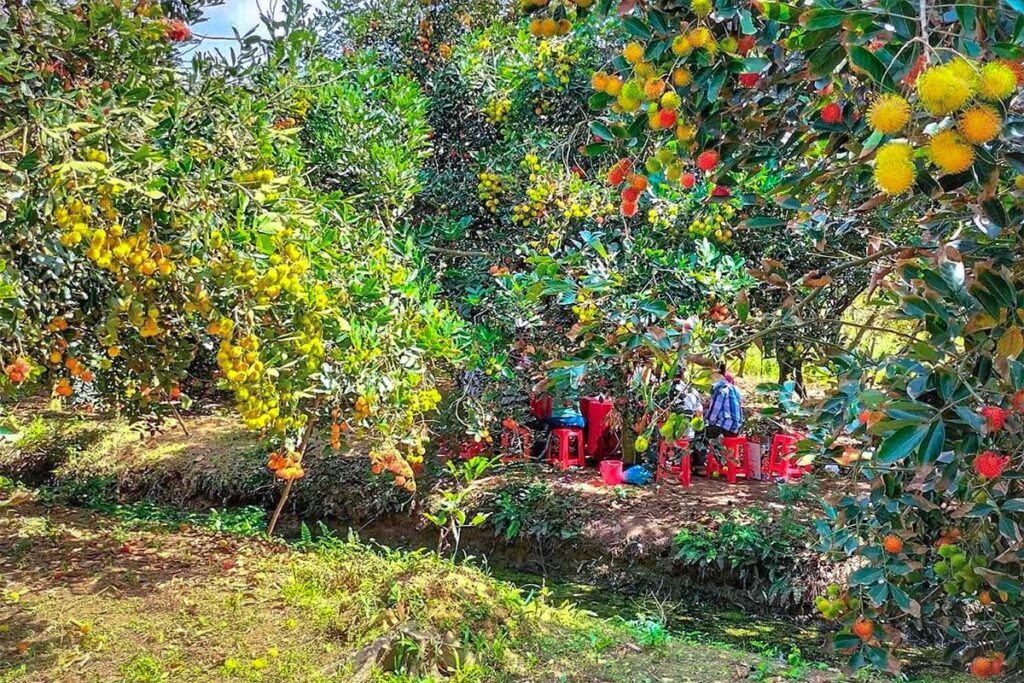
Unlike My Tho or Can Tho, the island is quieter and less developed. You won’t find large hotels or resorts here—most accommodation is in family-run homestays, where life moves at a slower pace. The appeal is in the simplicity: cycling through narrow lanes, chatting with locals, or sitting in a hammock while watching the river.
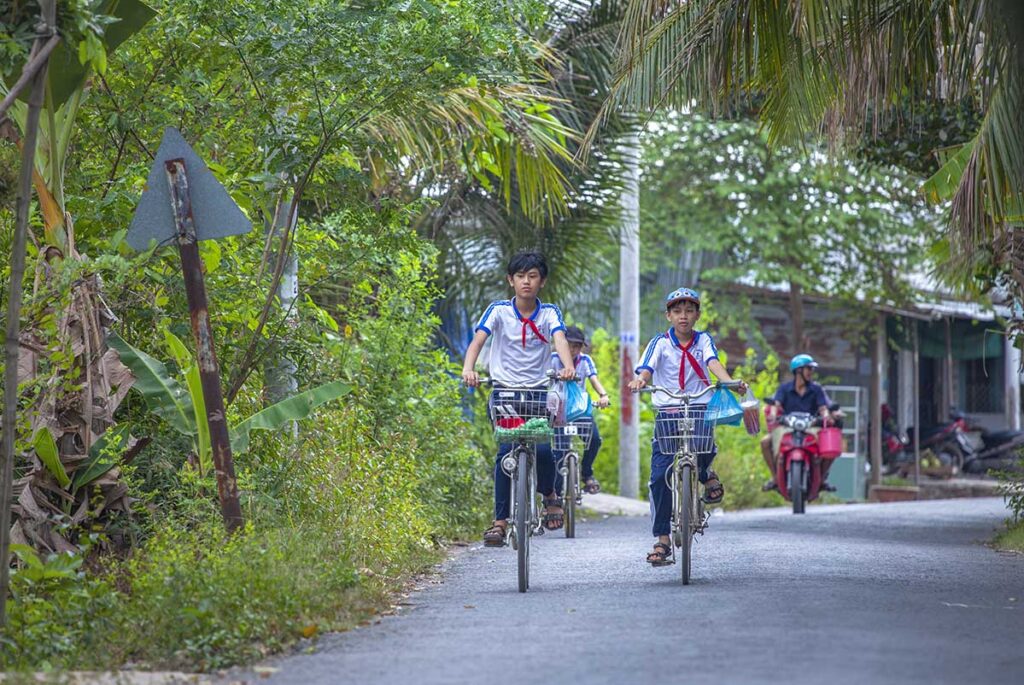
For travelers who enjoy authentic experiences and don’t mind limited infrastructure, An Binh Island offers a calm and local alternative to the busier Mekong towns. It’s not a place packed with major attractions, but that’s also part of the charm.
How to get to An Binh Island
Getting to An Binh Island is fairly straightforward, but it usually takes a combination of road and river travel.
The first step is reaching Vinh Long City, about three hours from Ho Chi Minh City. You can take a regular public bus (150,000–200,000 VND / ~6–8 USD), a more comfortable limousine van (around 250,000 VND / ~10 USD), or arrange a private car if you prefer flexibility. Most buses and vans depart from Ho Chi Minh City’s southern bus stations and drop you near Vinh Long.
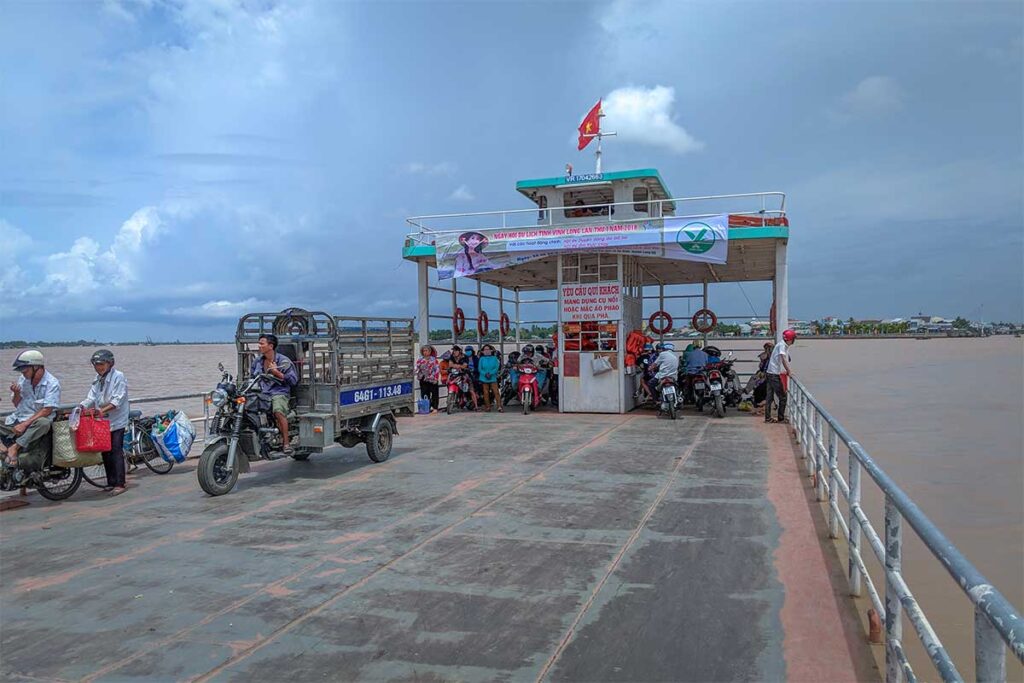
From Vinh Long City, you’ll need to cross the river by ferry to An Binh. The ferry runs roughly every 20–30 minutes during the day, takes about 15 minutes, and costs only 5,000 VND (a few cents). It’s a very local experience—expect motorbikes, bicycles, and villagers carrying goods onboard.
Once you arrive on the island, your homestay may be within walking distance, or the owner can usually arrange a motorbike pickup. There are no Grab cars or taxis on the island, so it’s best to coordinate with your accommodation in advance. Another option is to organize a boat transfer or day tour directly from Vinh Long, which can combine the river crossing with sightseeing along the canals.
Things to Do and See on An Binh Island
1. Join a boat tour
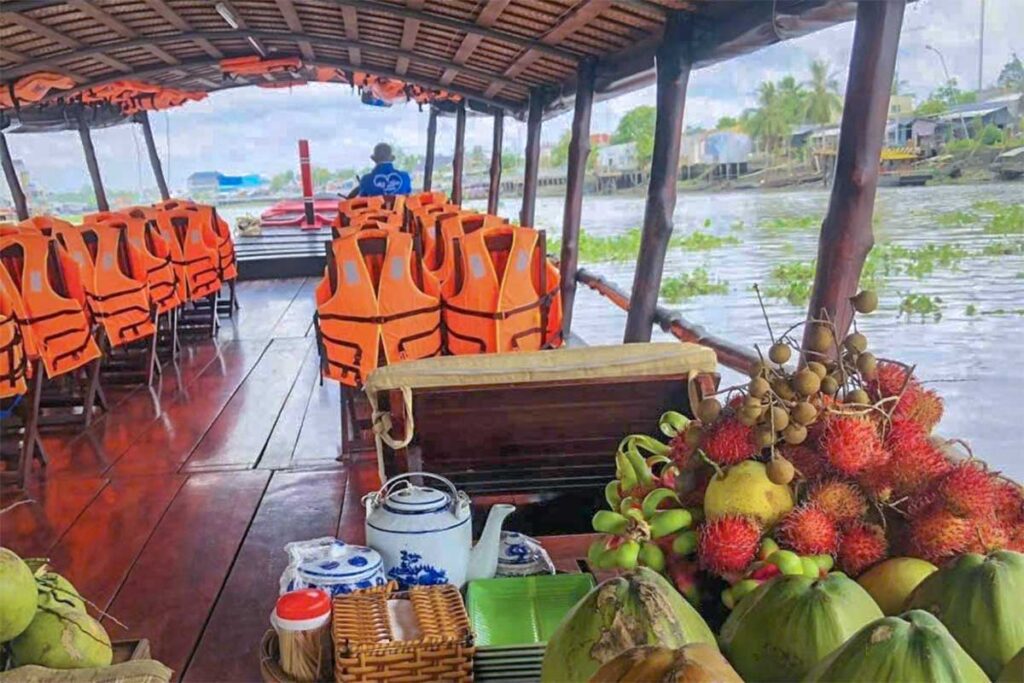
A boat trip is the classic way to experience the island and its surroundings. Small wooden boats take you along quiet canals lined with fruit trees and village houses, giving you a good feel for Mekong Delta life. Many homestays arrange half-day tours that can include stops at orchards or even a floating market, depending on the route. It’s slow, peaceful travel rather than high sightseeing.
2. Explore by bicycle
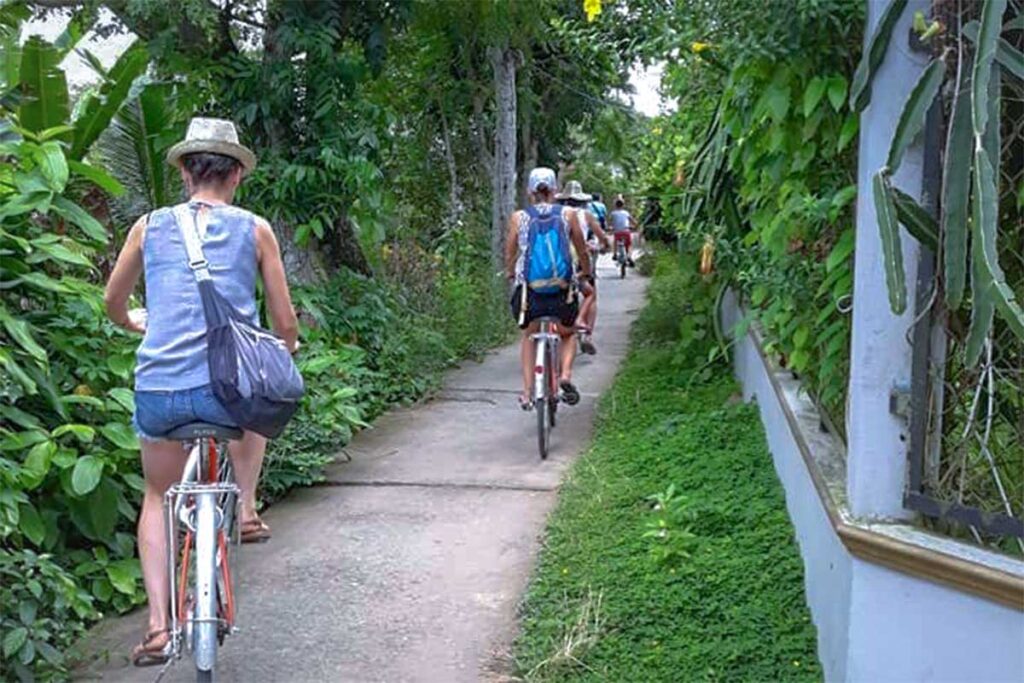
Cycling is another easy way to see the island. The small concrete paths connect villages, gardens, and markets, and most homestays have free bicycles for guests (though some are in better condition than others). It’s flat terrain, so almost anyone can manage, and it’s a relaxed way to discover daily life on the island.
3. Relax in a local homestay
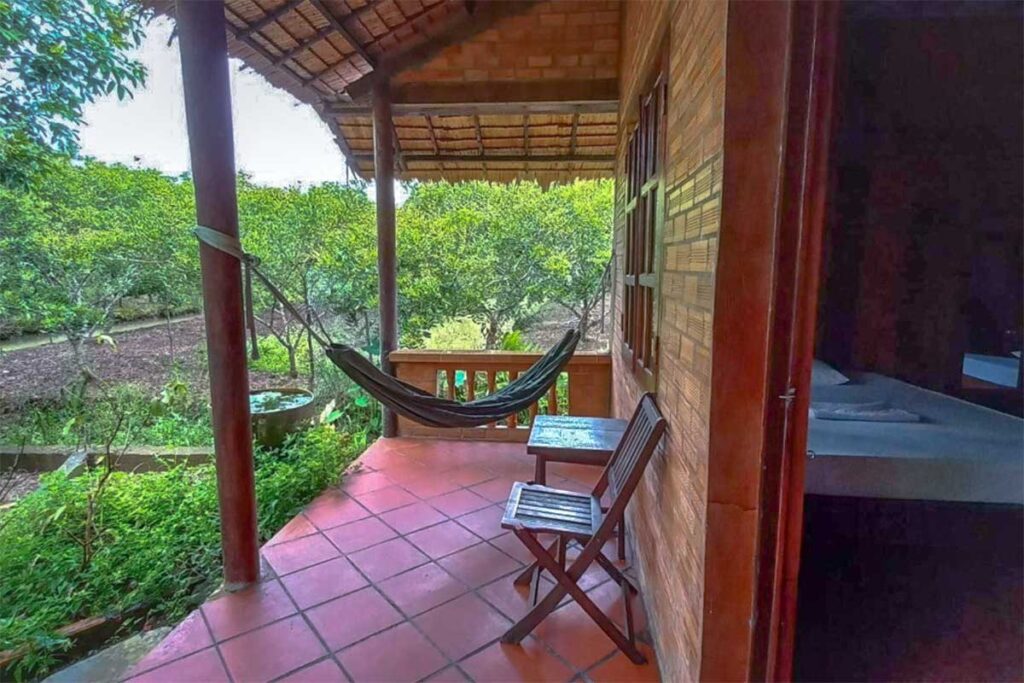
Homestays are the heart of the An Binh experience. Rooms are usually simple—often with fans, mosquito nets, and basic bathrooms—but the setting is what makes them special. You’ll likely spend evenings in hammocks by the river, eating home-cooked meals with your hosts, and chatting with other travelers. Don’t expect luxury, but the atmosphere and food are usually a highlight.
4. Visit fruit orchards
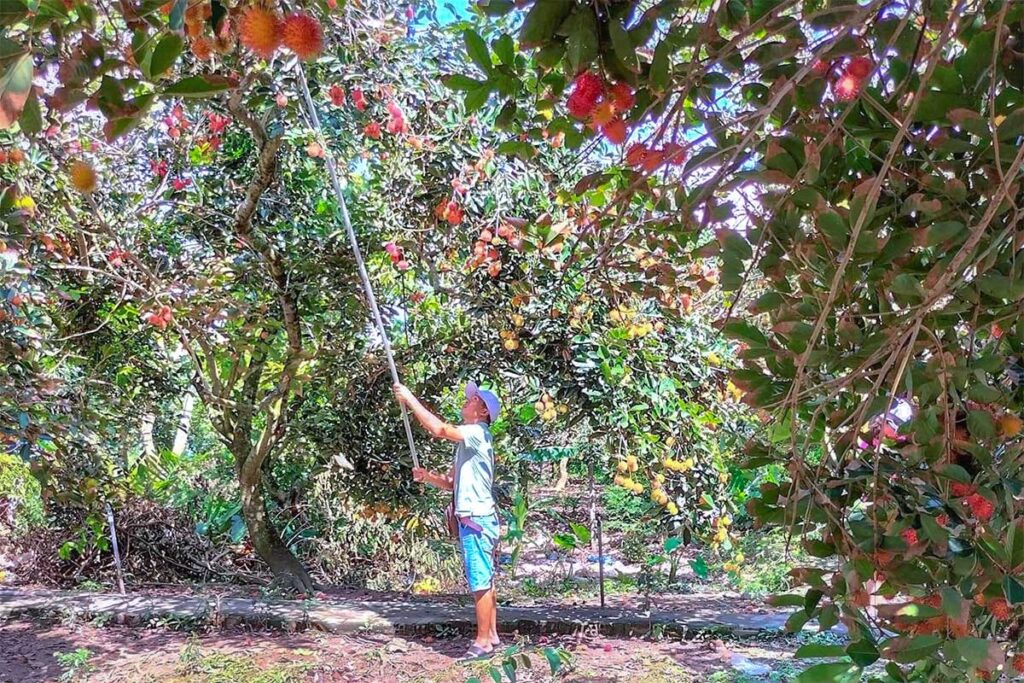
Fruit gardens are everywhere on An Binh, and many open their gates to visitors. Depending on the season, you might try rambutan, pomelo, longan, or durian straight from the trees. Some orchards charge 30,000–50,000 VND for an “eat as much as you like” ticket. Popular ones include 6 Tons Fruit Garden and Ms. Sau Garden. Visiting works well as part of a boat or cycling trip.
5. Walk around An Binh Market
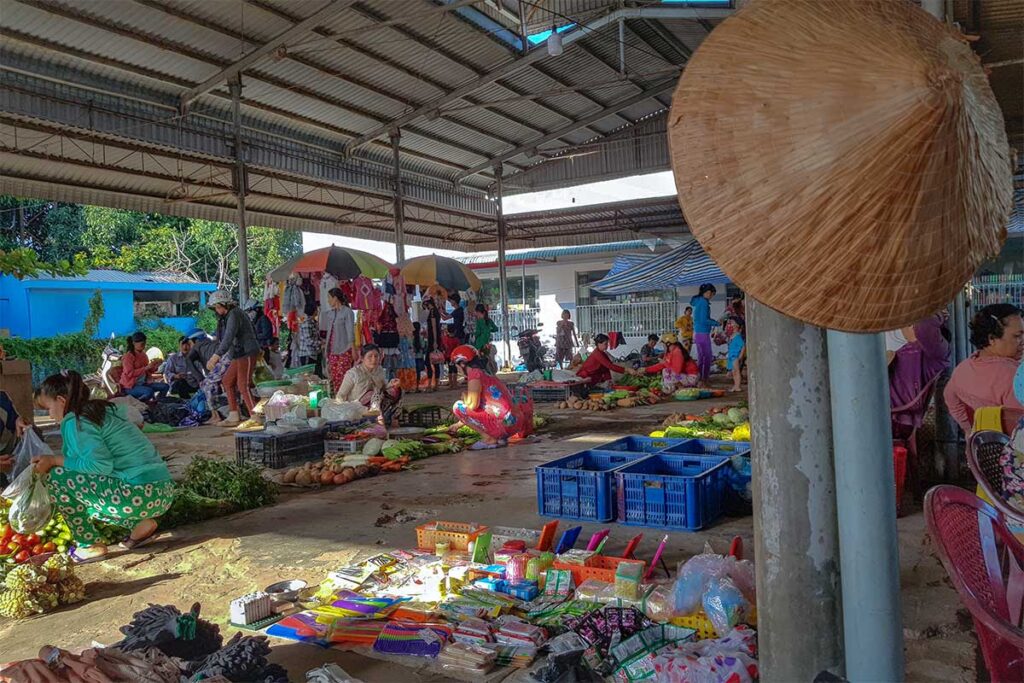
The island’s small market isn’t a tourist attraction in itself, but it’s worth a look if you’re curious about everyday shopping in the Mekong Delta. You’ll see plenty of fresh produce, local snacks, and fried banana fritters. It’s a slice of daily life rather than a must-see stop.
6. Tien Chau Pagoda
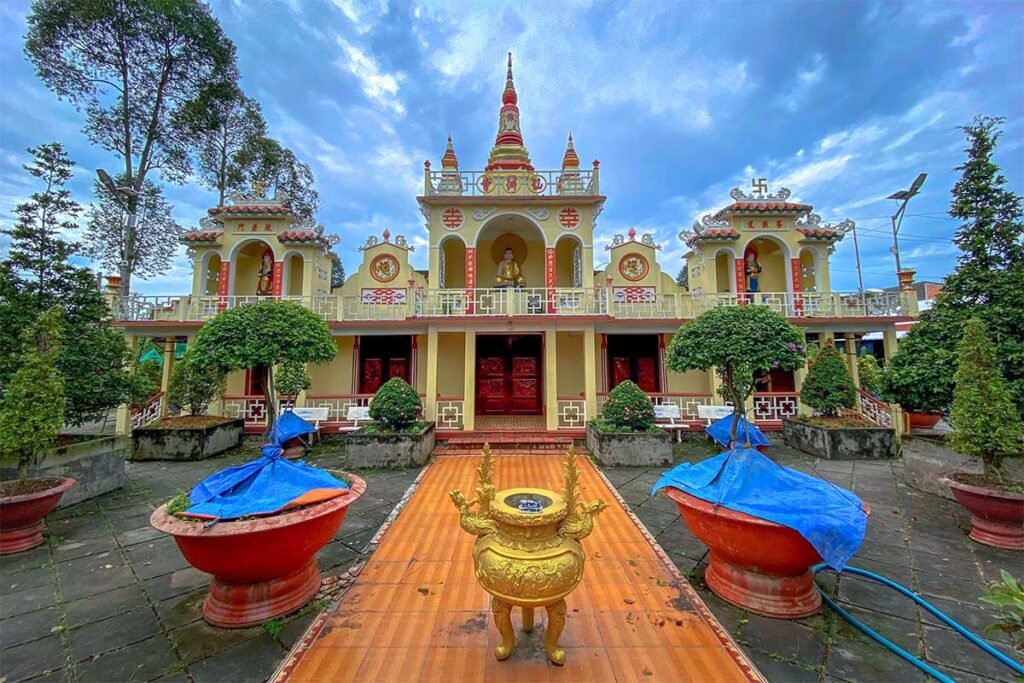
Dating back over 250 years, Tien Chau Pagoda is the oldest in Vinh Long Province and a recognized national historic site. It mixes Vietnamese and Chinese Buddhist influences, with old statues, antique ceramics, and shaded gardens. Parts of the grounds aren’t always well-maintained, but the atmosphere remains calm and authentic, especially if you come outside of busy times.
7. Vinh Sang Tourist Area
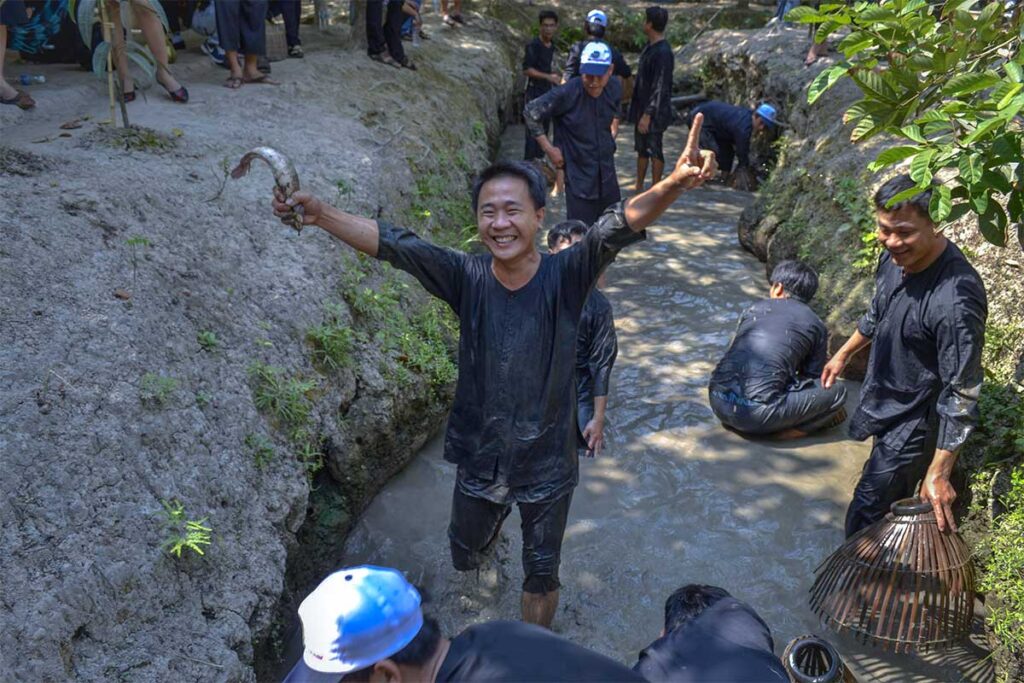
This large eco-tourism park combines fruit orchards with a mix of recreational activities. Locals enjoy fishing, team-building games, or sampling food here.
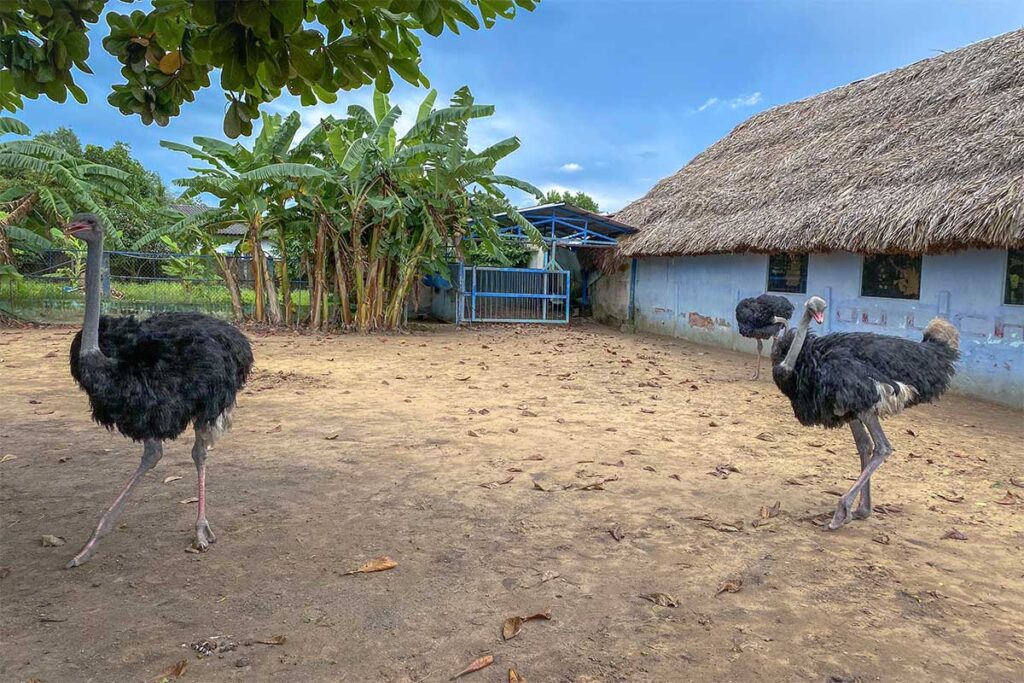
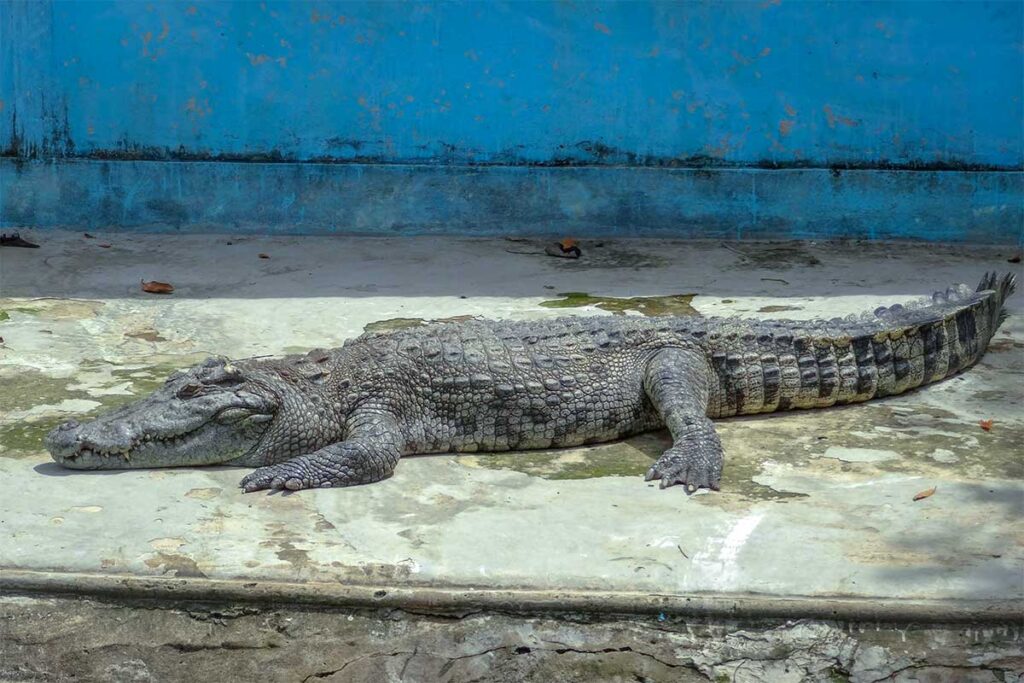
Some activities, like ostrich riding and crocodile shows, are not appealing for many foreign visitors.
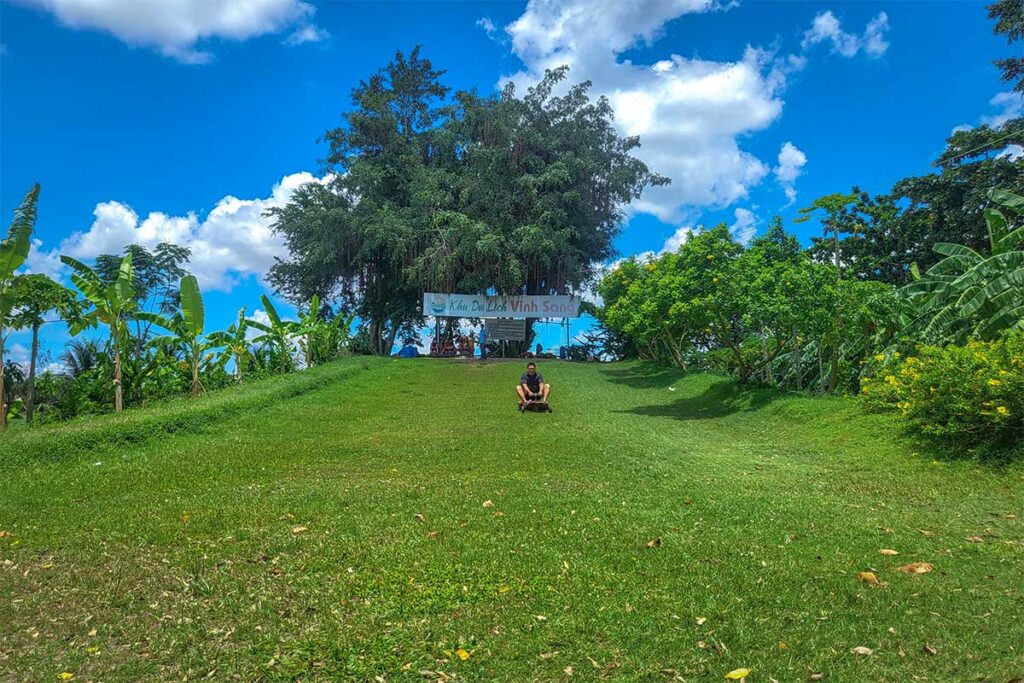
There are, however, plenty of family-friendly things to do without animals. Overall, it feels more like a domestic day-out park than a must for international travelers.
8. Cai Cuong Ancient House
One of the cultural highlights is Cai Cuong Ancient House, a blend of French colonial and Vietnamese design. Inside, you’ll find antique wooden furniture and carved details that reflect the wealth of past landowners. Sometimes, traditional don ca tai tu (Southern folk music) is performed here, adding to the experience. It’s a small stop, but it adds a layer of history to an otherwise rural visit.
How to get around the Island
There are no Grab cars, taxis, or regular public transport on An Binh Island, so getting around is simple but limited. The most common way is by walking or cycling, with bicycles usually provided for free at homestays (though quality varies). For longer distances, you can rent a motorbike for around 100,000–150,000 VND per day.
Homestay owners are generally happy to arrange pickups, drop-offs, or even small boat transfers if needed. Roads are narrow and sometimes confusing, with lots of canals and bridges, so the easiest way to explore is to follow one main road along a canal instead of trying to crisscross the island—you’ll still see plenty of local life without worrying about getting lost.
Travel tips
- Bring cash – There are no ATMs on the island, and most places won’t accept cards.
- Best time to visit – May to August is fruit season, but the weather is fairly mild year-round.
- Essentials – Pack mosquito spray, sunscreen, basic medicines, and some snacks, since shops are limited.
- Connectivity – WiFi at homestays is usually reliable, and mobile coverage works fine.
- Cultural respect – Ask before picking fruit, and wear modest clothing when visiting pagodas.
- No nightlife – Evenings are quiet, so bring a book, enjoy the hammocks, or simply relax by the river.
Is An Binh Island worth visiting?
An Binh Island is a good place if you want to experience the everyday rhythm of the Mekong Delta. The pros are clear: peaceful canals, welcoming homestays, seasonal fruit orchards, and a slower, more authentic pace of life compared to the bigger Mekong towns.
On the other hand, the island has limited infrastructure and the activities are simple—cycling, boat trips, and orchard visits rather than major sights or luxury services. Some places, like the eco-tourism park, may feel more geared toward domestic visitors than foreign travelers.
Overall, it’s worth visiting if you’re drawn to local experiences, enjoy quiet countryside settings, and don’t mind basic comforts. If you prefer polished attractions, high-end resorts, or a packed itinerary, you might find it underwhelming.
